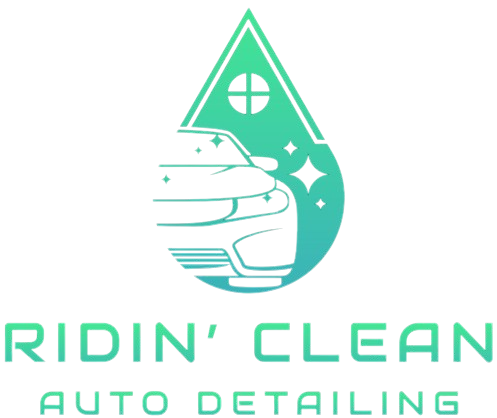When it comes to keeping your vehicle looking its best, waxing is one of the most important steps in the car care process. A proper wax application not only enhances your car’s shine but also provides a protective layer against UV rays, dirt, road grime, and water. However, one critical factor many car owners overlook is how temperature and weather impact the waxing process.
Applying car wax in the wrong conditions can lead to streaking, uneven coverage, or reduced protection. In this detailed guide, we’ll break down the science behind wax application, how climate influences results, and the best practices to ensure your car gets long-lasting protection no matter the season.

Why Temperature and Weather Matter When Waxing
Car wax isn’t just a cosmetic product—it’s a protective layer designed to bond with your vehicle’s clear coat. For that bond to happen correctly, the wax needs to:
-
Spread evenly across the paint surface.
-
Dry or “cure” properly before being buffed off.
-
Resist environmental contaminants once applied.
Temperature and weather conditions can dramatically affect how well this process works. Too hot, and the wax dries too quickly, making it difficult to buff out. Too cold, and the wax struggles to bond and harden properly. Add humidity, rain, or direct sunlight into the mix, and results can vary even more.
The Ideal Temperature for Waxing a Car
Most professional detailers recommend waxing your car in temperatures between 55°F and 85°F (13°C – 29°C). This range allows wax to spread smoothly and cure properly without drying too fast or staying tacky.
-
Below 55°F (13°C): Wax becomes harder to spread, and curing slows down. It may also leave streaks or a hazy finish.
-
Above 85°F (29°C): Wax can flash-dry (dry too quickly), making buffing difficult and leading to uneven coverage or residue.
How Weather Conditions Affect Wax Application
1. Sunlight
Applying wax in direct sunlight can cause the surface temperature of your car to skyrocket, even if the air temperature feels mild. This leads to rapid drying, uneven application, and visible streaks.
Best practice: Always wax in a shaded area or inside a garage.
2. Humidity
High humidity can slow the curing process, leaving wax feeling sticky or oily. On the flip side, extremely dry air can accelerate drying, making buffing harder.
Best practice: Choose a day with moderate humidity, and avoid waxing immediately after rain or during damp mornings.
3. Rain
Waxing just before a rainstorm is a waste of effort—the water will wash away freshly applied wax before it bonds.
Best practice: Ensure at least 24 hours of dry weather after application.
4. Cold Weather
During winter, wax hardens quickly, making it tough to spread evenly. Some waxes even become brittle and clump on the applicator.
Best practice: Warm the car and product indoors before waxing, or use synthetic waxes designed for colder climates.
5. Wind
Strong winds can blow dust and debris onto your car mid-application, leading to scratches when buffing.
Best practice: Wax in a sheltered environment away from blowing dirt and particles.
Different Types of Wax and Their Weather Sensitivity
Not all waxes react to weather conditions in the same way. Understanding the type of wax you’re using can help you adjust your process.
1. Carnauba Wax
-
Natural, glossy finish.
-
Sensitive to temperature extremes—melts in hot weather, hardens in cold.
-
Best for moderate climates.
2. Synthetic Wax (Sealants)
-
Made from polymers for longer durability.
-
More resilient to varying temperatures and humidity.
-
Ideal for extreme heat or cold regions.
3. Spray Waxes
-
Quick application but thinner protection.
-
Less sensitive to weather but not as durable as paste or liquid waxes.
-
Good for quick touch-ups between full wax applications.
Seasonal Waxing Considerations
Spring and Summer
-
High UV exposure can fade paint—waxing provides much-needed protection.
-
Avoid midday sun and hot panels.
-
Early morning or late afternoon is best.
Fall
-
Prepares your car for winter by adding a protective shield against rain, road salt, and falling debris.
-
Weather is typically mild, making application easier.
Winter
-
Wax acts as a barrier against road salt and snow.
-
Choose synthetic wax for longer durability in harsh conditions.
-
Apply in a garage or enclosed space to avoid freezing temps.
Tips for Perfect Wax Application in Any Weather
-
Check the Surface Temperature
Your car’s paint should feel cool to the touch before applying wax. -
Work in Small Sections
Apply wax to manageable areas to avoid it drying too quickly. -
Follow Manufacturer’s Instructions
Each product has specific curing times—stick to them. -
Use the Right Applicators
Foam or microfiber pads ensure smooth, even application. -
Buff Properly
Use a clean, soft microfiber towel to remove residue and reveal shine. -
Reapply Regularly
Depending on climate and driving conditions, reapply wax every 6–12 weeks.
Common Mistakes to Avoid
-
Waxing in direct sunlight.
-
Applying too thick a layer (thin, even coats work better).
-
Not allowing enough drying time before buffing.
-
Waxing a dirty or dusty car (always wash first).
Final Thoughts
Temperature and weather are just as important as technique when it comes to waxing your car. For best results:
-
Aim for mild temperatures between 55°F and 85°F.
-
Avoid direct sunlight, rain, and extreme humidity.
-
Choose the right wax type for your climate.
When done properly, waxing not only enhances your car’s shine but also protects it from the elements year-round.
At Ridin’ Clean Auto Detailing, we take the guesswork out of car care. Our team specializes in professional auto detailing, ceramic coating, car waxing, and paint correction in San Diego—always applying products in the right conditions for maximum durability and shine.
Contact Ridin’ Clean Auto Detailing today and let us protect and perfect your car’s finish!
